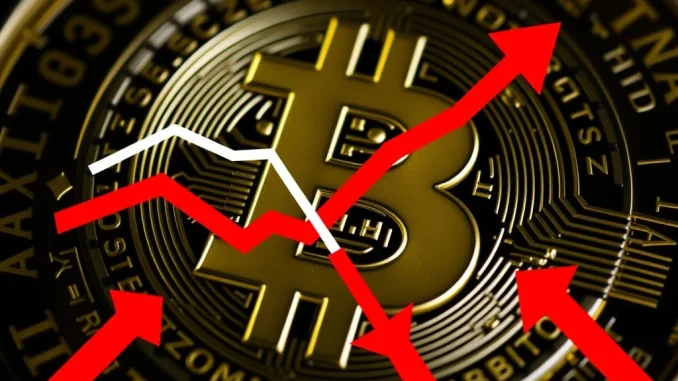
Hold onto your hats, crypto enthusiasts! The U.S. Spot Bitcoin ETF market just experienced a jolt. On April 8th, these much-talked-about investment vehicles saw a whopping $326.55 million in net outflows. This marks the fourth consecutive day of investors pulling funds out. Is this just a blip, or are we witnessing a more significant shift in sentiment? Let’s dive into the details and decode what this Bitcoin ETF Outflows trend could mean for the crypto king.
Decoding the $326M Bitcoin ETF Outflows: What Happened on April 8th?
According to crypto analyst Trader T (@thepfund) on X, the outflow wasn’t spread evenly across all ETFs. In fact, some big names led the charge downwards. Here’s a breakdown of where the biggest withdrawals occurred:
- BlackRock’s IBIT: Leading the pack with a significant $253.18 million in net outflows.
- Bitwise’s BITB: Following behind with $21.71 million in outflows.
- ARK Invest’s ARKB: Recorded $19.90 million in net outflows.
- Franklin Templeton’s EZBC: Experienced $8.89 million leaving the fund.
- Grayscale’s GBTC: Saw $8.49 million in outflows.
- BTC (Bitcoin Strategy ETF): Not to be left out, with $7.48 million in outflows.
- Invesco’s BTCO: Rounding out the list with $6.90 million in net outflows.
Interestingly, the rest of the U.S. spot Bitcoin ETFs reported no change in their holdings for the day. This concentration of outflows in specific ETFs raises some interesting questions.
Why are Investors Pulling Back from Spot Bitcoin ETFs? Exploring Potential Reasons Behind ETF Outflows
Several factors could be contributing to this recent trend of ETF Outflows. Let’s consider some possibilities:
Profit Taking After Rallies:
Bitcoin has seen impressive price appreciation in recent months. Investors who bought into Spot Bitcoin ETF earlier might be taking profits off the table, especially after periods of strong gains. This is a natural market cycle – what goes up, sometimes needs to consolidate or correct.
Market Volatility and Uncertainty:
The crypto market is known for its volatility. Economic uncertainties, regulatory concerns, or even just general market sentiment can trigger investors to reduce risk. Crypto ETF, while providing exposure to Bitcoin, are still subject to these broader market forces. Increased volatility might lead some investors to move to less risky assets, at least temporarily.
Rotation into Other Assets:
Investment strategies are dynamic. It’s possible that investors are reallocating their portfolios, shifting funds from Bitcoin ETFs into other asset classes that they perceive as more attractive at the moment. This could be traditional equities, bonds, or even other cryptocurrencies showing promising growth.
GBTC Dynamics:
Grayscale’s GBTC has been consistently experiencing outflows since its conversion to a spot ETF. This could be due to its higher fees compared to newer ETFs or investors unwinding positions that were locked up during its trust phase. While GBTC outflows have been ongoing, they still contribute to the overall net outflow figures.
Impact of Bitcoin ETF Outflows on the Market: Is This a Bearish Signal?
While a single day or even a few days of outflows don’t necessarily define a long-term trend, consistent Bitcoin ETF Outflows can have implications for the market. Here’s what to consider:
Potential Price Pressure:
Outflows mean selling pressure. When ETFs sell Bitcoin to meet redemptions, it can contribute to downward pressure on the price of Bitcoin, at least in the short term. However, the magnitude of impact depends on the overall market liquidity and buying interest.
Sentiment Indicator:
ETF flows are often seen as a gauge of institutional and retail investor sentiment. Sustained outflows could indicate a cooling off in enthusiasm or growing caution towards Bitcoin in the short term. It’s important to monitor if this trend continues or reverses.
Long-Term Perspective:
Despite these recent outflows, it’s crucial to remember the bigger picture. Bitcoin Investment through ETFs is still relatively new. Market fluctuations and adjustments are expected. The long-term success and impact of spot Bitcoin ETFs will depend on sustained adoption and the overall trajectory of the crypto market.
Navigating Bitcoin Investment in the ETF Era: Key Takeaways
The recent Bitcoin ETF Outflows serve as a reminder of the dynamic nature of the crypto market. Here are some actionable insights:
- Stay Informed: Keep track of ETF flow data and market analysis from reputable sources. Understanding market sentiment is crucial for informed decision-making.
- Consider Long-Term Strategy: Avoid making impulsive decisions based on short-term fluctuations. Develop a well-thought-out Bitcoin Investment strategy aligned with your risk tolerance and investment goals.
- Diversification: Don’t put all your eggs in one basket. Diversify your investment portfolio across different asset classes to mitigate risk.
- Understand ETF Dynamics: Learn how ETFs work, including potential premiums, discounts, and expense ratios. This knowledge will help you navigate the ETF market more effectively.
Conclusion: Is This a Temporary Dip or a Sign of a Bearish Turn for Bitcoin?
The $326.55 million Bitcoin ETF Outflows on April 8th are certainly noteworthy. While it’s tempting to jump to conclusions, it’s crucial to analyze this data within a broader context. Whether this is a temporary dip or the start of a more prolonged bearish trend remains to be seen. Keep a close eye on ETF flows, market sentiment, and broader economic indicators to make informed decisions about your Crypto ETF and Bitcoin investments. The crypto journey is rarely a straight line, and understanding these fluctuations is key to navigating the exciting, yet volatile, world of digital assets.



